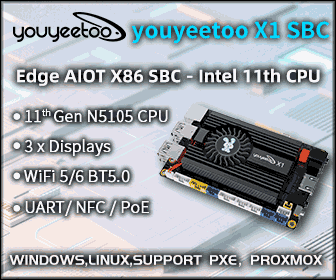Raspberry Pi Camera Module Is Now Available, How-to Use It
About one year after showing the first image from the camera module prototype, the Raspberry Pi Foundation announced the Camera board is now available for purchase on RS Component or Element14. Navigating either of these sites is a nightmare, but, if you’re lucky, you should eventually find the camera board for around $25 before taxes and shipping. “Raspicam” features the following hardware specifications: Omnivision 5647 sensor in a fixed-focus module 5MPixel sensor Still picture resolution: 2592 x 1944 Max video resolution: 1080p Max frame rate: 30fps Size: 20 x 25 x 10mm Connection by flat ribbon cable to 15-pin MIPI Camera Serial Interface (CSI) connector S5 on Raspberry Pi computer board The first thing you’ll have to do with the camera is to connect it to the CSI connector on your Raspberry Pi, just behind the Ethernet connector on model B. James explains it very clearly in the video below. […]





